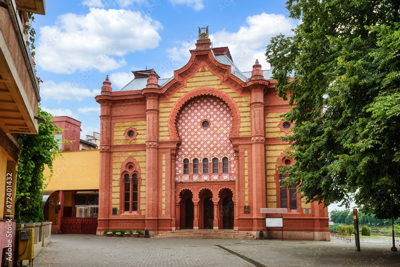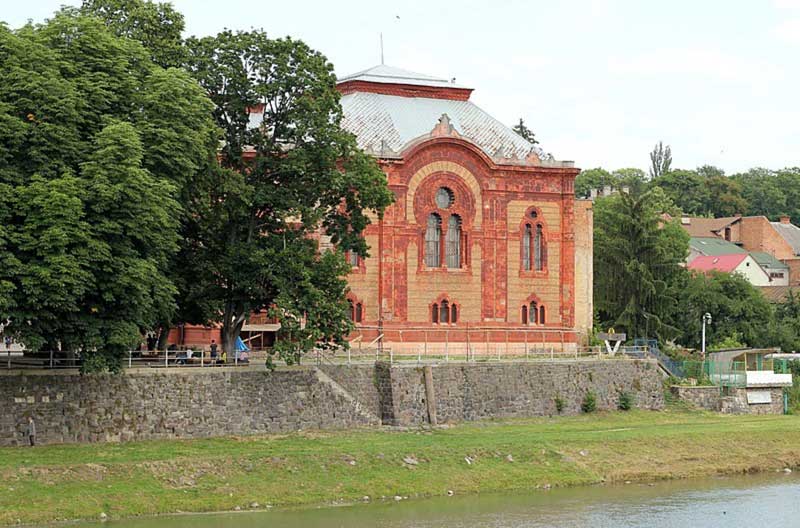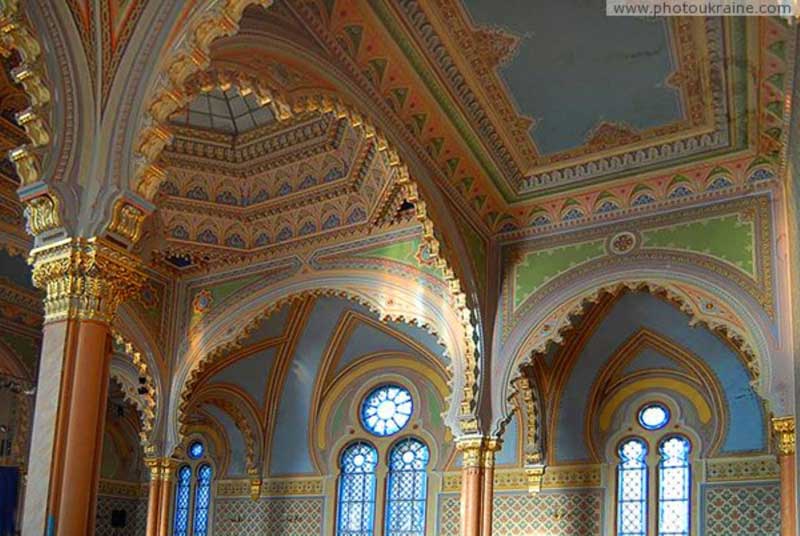
Designed by the famed architects Gyula Papp and Ferenc Szabolcs and located in western Ukraine, not too far from Hungary, Poland and Romania, the Uzhgorod Synagogue, completed and dedicated on 27 July 1904, was built in a Romantic style that boldly blended Byzantine Revival and Moorish Revival architectural elements. During those days, the city of Uzhgorod was part of the Austro-Hungarian Empire and the city government donated a very valuable piece of land on the banks of the River Ugh, for the construction of the synagogue for the use of the 85,000 Ashkenazi Jews, nearly all of whom were ruthlessly annihilated in the Holocaust.


The construction of the Uzhgorod Synagogue, complete with a beautiful exterior and rich interior decoration, was carried out on the donations of wealthy Jews from the local community. Made of pink marble, lined with red ceramic tiles and decorative bricks, it was one of the most expensive finishing materials in the early 20th century. One of the most striking parts of the synagogue is the image of the Star of David on the central balcony of the building façade. The pompously decorated roof of the synagogue, adorned with Moorish motifs, highlighted with copper ornaments and sculpted towers, is crowned with characters Tablets of the Covenant. The historical building is carefully preserved and still stands in modern-day Uzhgorod, Ukraine, near the border with Slovakia.

After the First World War, the city became part of Czechoslovakia, when it started to flourish as a modern city. The name of the city was also changed under the Czechoslovak administration from Ungvár to officially adopt the present name sometime after 1920. However, the prime days of the synagogue ended with the onset of the Second World War, when the Carpathian Jews were butchered in 1944. After the end of the Great War, Uzhgorod was annexed by Stalin and made part of the Ukrainian Soviet Socialist Republic in 1947. As the USSR Ministry of Culture decided to open a philharmonic or concert hall in it, the interior of the historic building was completely converted to meet the needs of the cultural centre, while the exterior remained almost the same. While a spacious lobby appeared in the building, the stage and the auditorium were also created. However, the massive antique doors of the original building, the elaborate stucco works and the beautiful ceiling painting were untouched and preserved in the main hall. But the exterior of the building became much more modest, as all the Jewish symbols were removed from the building, along with the Star of David and the other Moorish decorations.

In recent years, the building of the Uzhgorod Synagogue, equipped with an organ, is used as a permanent venue for various music festivals and has become the main concert hall of the city. Although all the Jewish symbols were removed from the building, as of 2012, there is a plaque on the facade commemorating the 85,000 Jews, who were unceremoniously liquidated in the Holocaust by the Nazis. There is also a plan to restore the glass dome with its mosaics.
